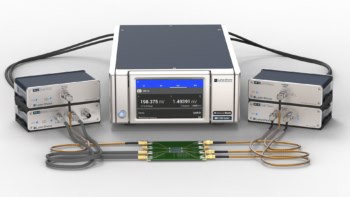Every year more than 6000 scientists travel from across the globe to the foot of the Alps in south-east France to visit a giant machine that produces intensely bright X-ray light. The European Synchrotron Radiation Facility (ESRF) is the most powerful synchrotron-radiation source in Europe and one of only four of its type in the world. Researchers use this X-ray light to study samples of materials because the radiation can reveal the interior structure of matter in fine detail without destroying it.
This short film takes you on a tour of this scientific facility to discover the inner workings of the machine and the types of research being done there. “The X-rays are used in many different disciplines in science,” explains Claus Habfast, head of communication group at the ESRF. “Of course, there is fundamental blue-sky research in physics and chemistry, but also many more applied or innovation-related research in materials science and in biology research.”
Synchrotron radiation is generated when a beam of electrons is forced to change direction using magnetic fields. This explains the ESRF’s distinctive circular shape, with experimental stations known as beamlines shooting off tangentially to the circle. “The circle is divided into 32 sections, where you have bending magnets to make the electrons circulate,” says Jean-Luc Revol, the ESRF’s operations manager. “And between these bending magnets you have undulators that produce specific radiation for each beamline.”
The film also profiles the €100m upgrade to the ESRF that is ongoing at the facility. Phase one is already under way and should be completed in 2015. Phase two, if approved next year, will be complete by 2019. “Phase one will improve the capacity and reliability of the storage ring,” explains Revol. “And the second phase – at least the accelerator part – will reduce the horizontal beam size in order to increase the brilliance and coherence of the source.”



